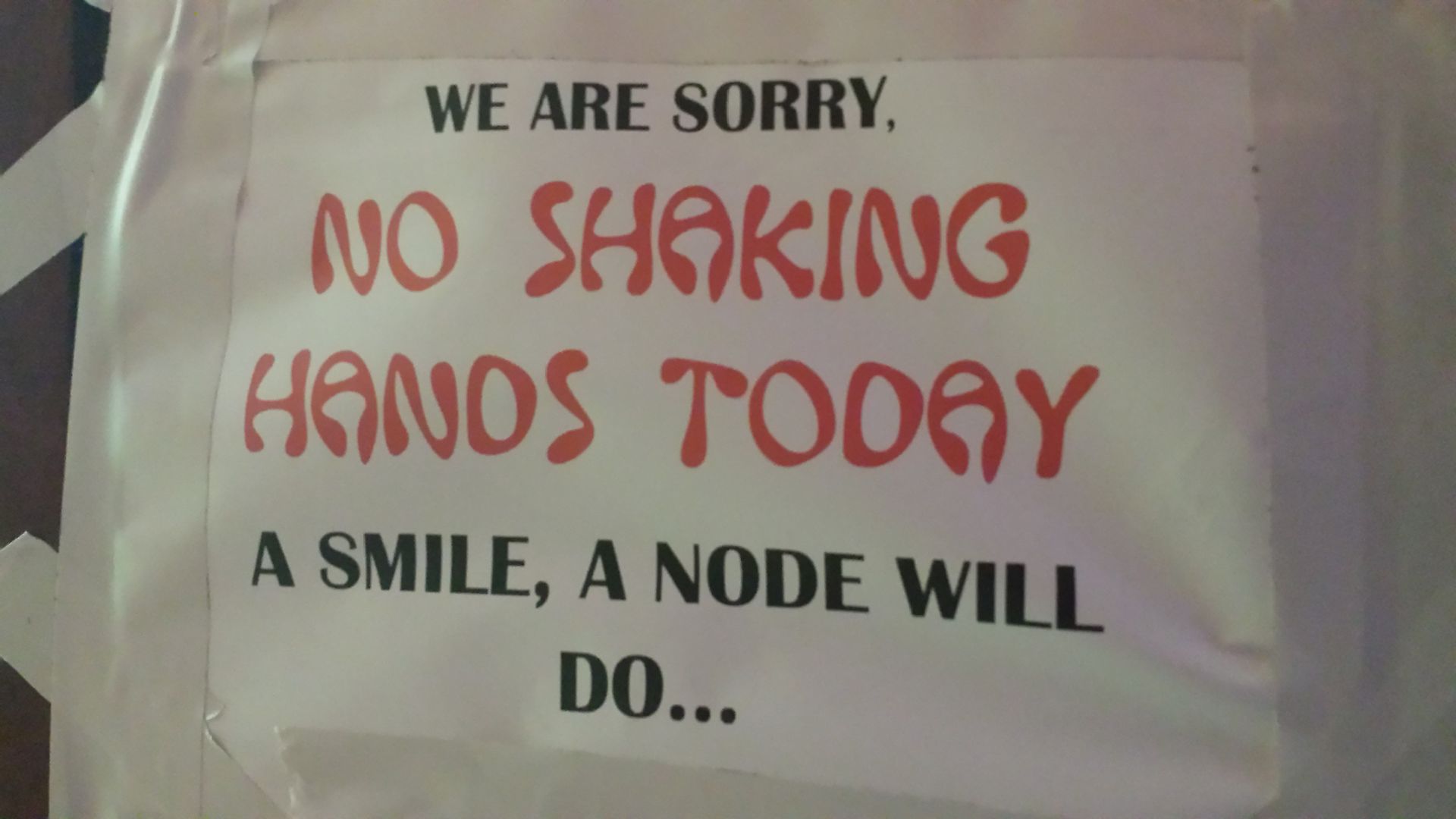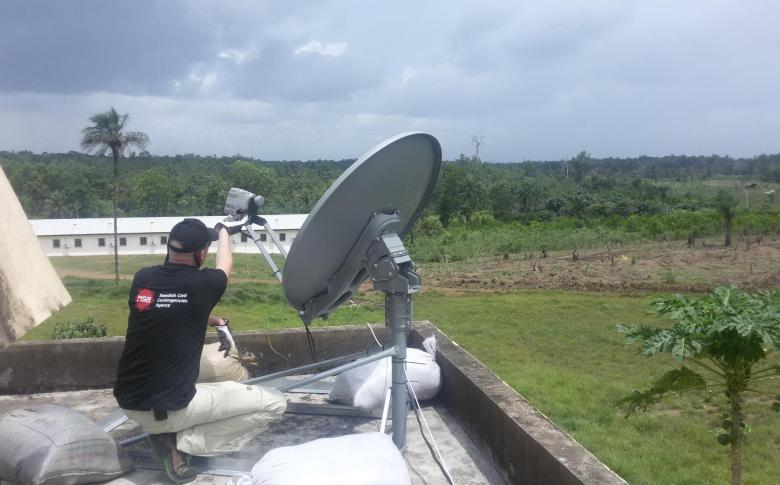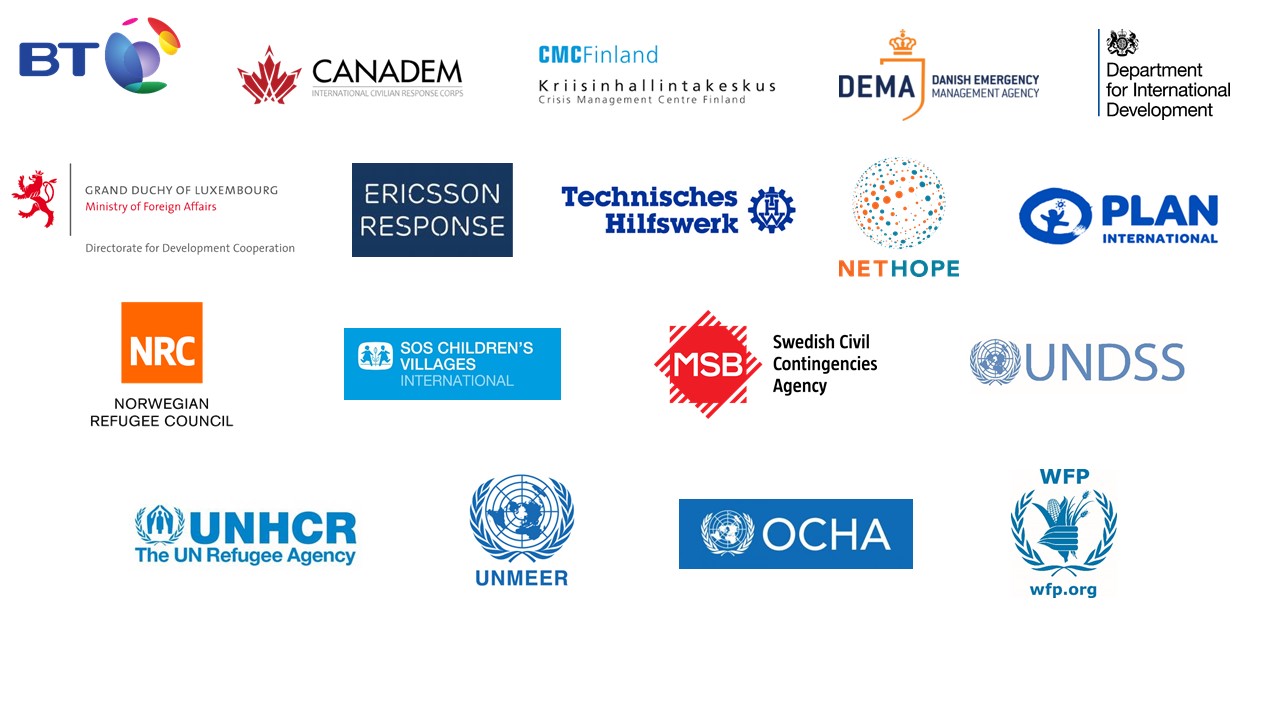
A Smile and a Nod as the ETC Operation Wraps Up in West Africa

After 16 months supporting the fight against Ebola, the ETC operation has come to a close.

Since the initial outbreak in March 2014, 28,603 cases of Ebola were reported across Guinea, Liberia, and Sierra Leone. Shockingly, more than 40% of those cases proved fatal*. In July 2014, this sign was posted on the wall of a Monrovia radio station, advising people not to shake hands. It was known then that the virus was around and that human-to-human contact needed to be reduced, but the full impact of the deadly Ebola outbreak in West Africa was completely unprecedented.
Although the World Health Organization (WHO) has not yet declared the end of the epidemic, the number of new confirmed cases of Ebola has significantly decreased and health care facilities are closing. After 16 months, the Emergency Telecommunications Cluster (ETC) was able to demobilise services in West Africa at the end of January 2016, handing service provision back to local, commercial providers.
The Ebola operation brought a number of ‘firsts’ for the ETC which has since influenced the cluster’s strategic direction. The West Africa Ebola response was considered one operation, but spread across three countries; each with its own government-lead approach; one with a different language to the others (Guinea); and then managed from a fourth country (Ghana). Voice and internet connectivity were required far beyond common operating areas, down to tens of community level centres – never before has the ETC provided services to so many sites, in one operation. The ETC even had to take on the acronym ‘ET Cluster’ for the duration of the operation so as not to be confused with ‘Ebola Treatment Centre’!
The West Africa response was also the first large-scale health emergency and the first time a dedicated UN body was established for a non-conflict emergency, the UN Mission for Ebola Emergency Response (UNMEER).
For the ETC responders on the ground, what made this emergency so extraordinary was that they were working almost alongside health workers. All responders, whether treating patients or setting up internet connectivity, risked exposure to the deadly virus on daily basis.
"It's more a personal challenge rather than a technical challenge to set-up equipment in facilities like a treatment unit,” said Martin Falebrand from Ericsson Response, deployed as part of the ETC response team to Sierra Leone. “It's a very special feeling to go into an Ebola Treatment Unit (ETU). You smell all the chlorine and you see the doctors working in the ‘red zone'. You are close enough to actually look across into the red zone of an ETU and see the people that are being treated inside. It's not far away – it's very close to Ebola."
The success of the ETC Ebola operation, the ability to rapidly expand and adjust to meet the constantly changing needs, was only possible due to strong partnerships and collaboration across the ETC network. "In the effort to provide internet services to humanitarians and medical personnel across West Africa, the role of partnerships cannot be overestimated," said Mark Phillips, ETC Emergency Coordinator for Sierra Leone. "From equipment to expertise, collaboration and contribution from our partners are what has allowed us to support so many medical facilities with essential services.”
From August 2014 to December 2015, the ETC network of partners provided vital communications services to over 3,000 responders at 91 sites across the three affected countries.
The ETC was not officially activated in West Africa, however UNMEER mandated WFP, as global lead of the ETC, to respond as if the Cluster was activated.
User of ETC services included: Ebola Treatment Units and Community Care Centres for treating patients; National and District Ebola Response Centres, responsible for coordination, case management, surveillance, safe burials and social mobilisation; Logistics bases where equipment ranging from medical protective equipment to electricity generators were warehoused; and offices and accommodations of various UN agencies and NGOs responding to the Ebola Outbreak.
A lesson learnt from this operation is the importance of a timely and reliable data transmission in public health emergencies. With internet connectivity provided to medical facilities, data transfer took minutes, instead of hours or even days. Whereas before information was often sent by text messages or communicated personally, access to internet enabled quick transmission of data from red to green zones of the ETU, but also from the ETUs in West Africa to medical research institutes worldwide.
The situation is stable now, but Ebola is far being gone from West Africa – the virus still takes its tolls in economic, as well as mental health terms, as many touched by Ebola are struggling to return to normal life. It will no doubt take many years for the countries to recover.
On behalf of the ETC, a smile, a nod, and an enormous thank-you to all the organisations which supported the response. All the best to the development organisations there supporting countries on the road to recovery.
ETC thanks all partners involved in the Ebola response operation:

By Katarzyna Chojnacka and Mariko Hall, Global ETC cell